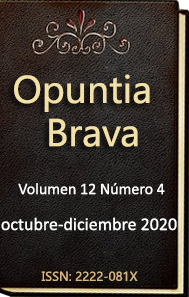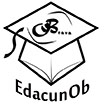Economic optimization model for planning production and use of irrigation water in urban agriculture
Keywords:
production planning, optimization, irrigation water use, linear programming, simulation.Abstract
An economic optimization model is proposed for production planning (based on optimal use of irrigation water) in urban agricultural units. The model is based on the use of the Monte Carlo simulation to determine the irrigation needs of the crops in the area, for three different scenarios (dry, medium and wet year) and on the use of the Linear Programming to determine the alternatives of optimal crops in the period. It is concluded with the decision making in risk environment and the elaboration of an aggregated production plan. It is a novel model, due to the inclusion of techniques little used in the country for the production planning, the adjustment to the particular conditions of the study area, the insertion in the analysis of water cost and the purpose of finding the alternatives of crops that maximize the economic utility obtained by cubic meter of water used. The model was submitted to expert criteria and qualified as Very Relevant. It was also partially applied in the Unit "El Tunerito" of the city of Las Tunas, for the planning of the production of the period September-December 2019, where a difference was obtained with respect to the traditional planning of increase of profit in $6368.00 and decrease of the water consumption in 48m3.
Downloads
References
Boirivant, J. A. (2011). El análisis post-optimal en programación lineal aplicada a la agricultura. Reflexiones, 90(1), 4.
Bueno, J. A. G., Quintero, S. M. D. y Rodriguez, J. N. (2017). Optimización de carteras a la luz de la teoría de decisión fuzzy. Puente, 10(2), 103-115.
Cuba. Ministerio de la Agricultura (MINAGRI). (2017). Informe de balance anual de producciones urbanas en Las Tunas. Informe impresión ligera. Las Tunas: Autor.
Chapman, S. (2006). Planificación y control de la producción (1ra ed.). México: Pearson Educación de México.
Domínguez, J., Álvarez, M., García, S., Domínguez, M. y Ruiz, A. (1995). Dirección de Operaciones: Aspectos Tácticos y Operativos en la Producción y los Servicios. Madrid: McGraw Hill.
Doorenbos, J. y Pruitt, W.O. (1975). Guidelines for predicting crop water requirements, Estudio de Riego y Drenaje No. 24. Organización de las Naciones Roma: Unidas para la Agricultura y la Alimentación.
Felipe, P., Rodríguez, B., Ruíz, N., González, A., y Álvarez, P. (2001). Programación matemática I. La Habana: Félix Varela.
González, R. C. (2017). Evapotranspiración y coeficiente de cultivo de la lechuga (BSS-13) en condiciones de organopónico. Revista Ingeniería Agrícola, 5(2), 10-15.
Martín-Benito, J. M. T., Merino, R., Valiente, M., de Juan Valero, J. A., y Álvarez, J. F. O. (1999). Modelo de optimización económica del manejo del agua de riego en las explotaciones agrícolas: Aplicación a la agricultura de regadío de la provincia de Toledo. Investigación agraria. Producción y protección vegetales, 14(3), 325-354.
Pacheco, J., Alonso, N., Pujol, P., y Camejo, E. (1995). Riego y drenaje. La Habana: Pueblo y Educación.
Partido Comunista de Cuba (PCC, 2017). Actualización de los lineamientos de la política, económica y social del partido y la revolución para el período 2016-2021. La Habana: Autor.
Steduto, P., Hsiao, T. C., Fereres, E. y Raes, D. (2012). Respuesta del rendimiento de los cultivos al agua. Estudio FAO Riego y Drenaje 66. Roma: Organización de las Naciones Unidas para la Alimentación y la Agricultura.
Stewart, J. I., Hagan, R. M., Pruitt, W. O., Danielson, R. E., Franklin, W. T., Hanks, R. J. y Jackson, E. B. (1977). Optimizing crop production through control of water and salinity levels in the soil. Estados Unidos: Reports Paper 67. Utah Water Research Laboratory, USA.
Taha, H. A. (2012). Investigación de Operaciones. Novena Edición. México: Pearson Educación.
Vásquez, J. P. R., Cárdenas, D. C., Carrillo, M. G. G., y Rosero, C. H. S. (2015). Modelo de programación lineal para planeación de requerimiento de materiales. Revista Tecnológica-ESPOL, 28(2).







.png)



.png)



.png)





















